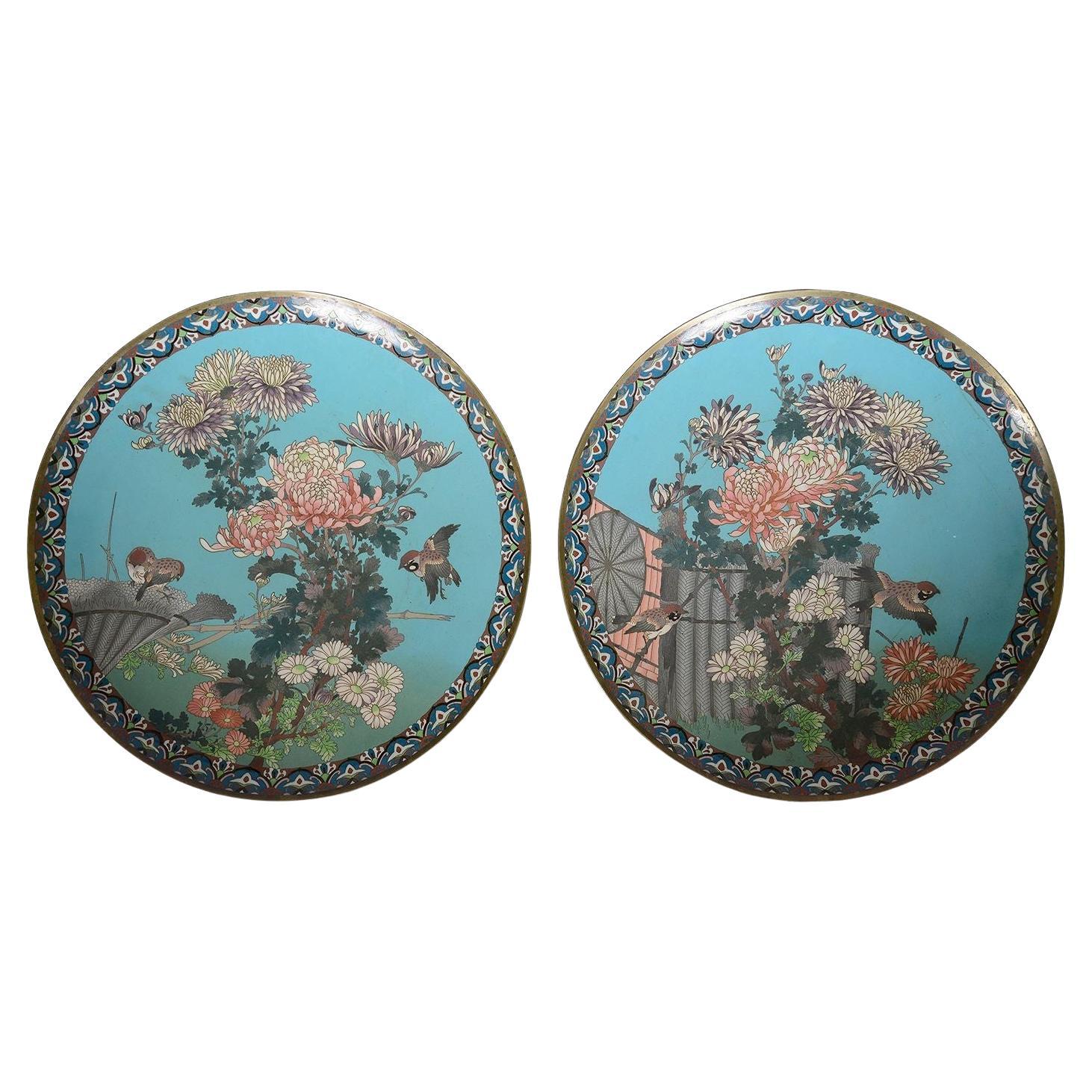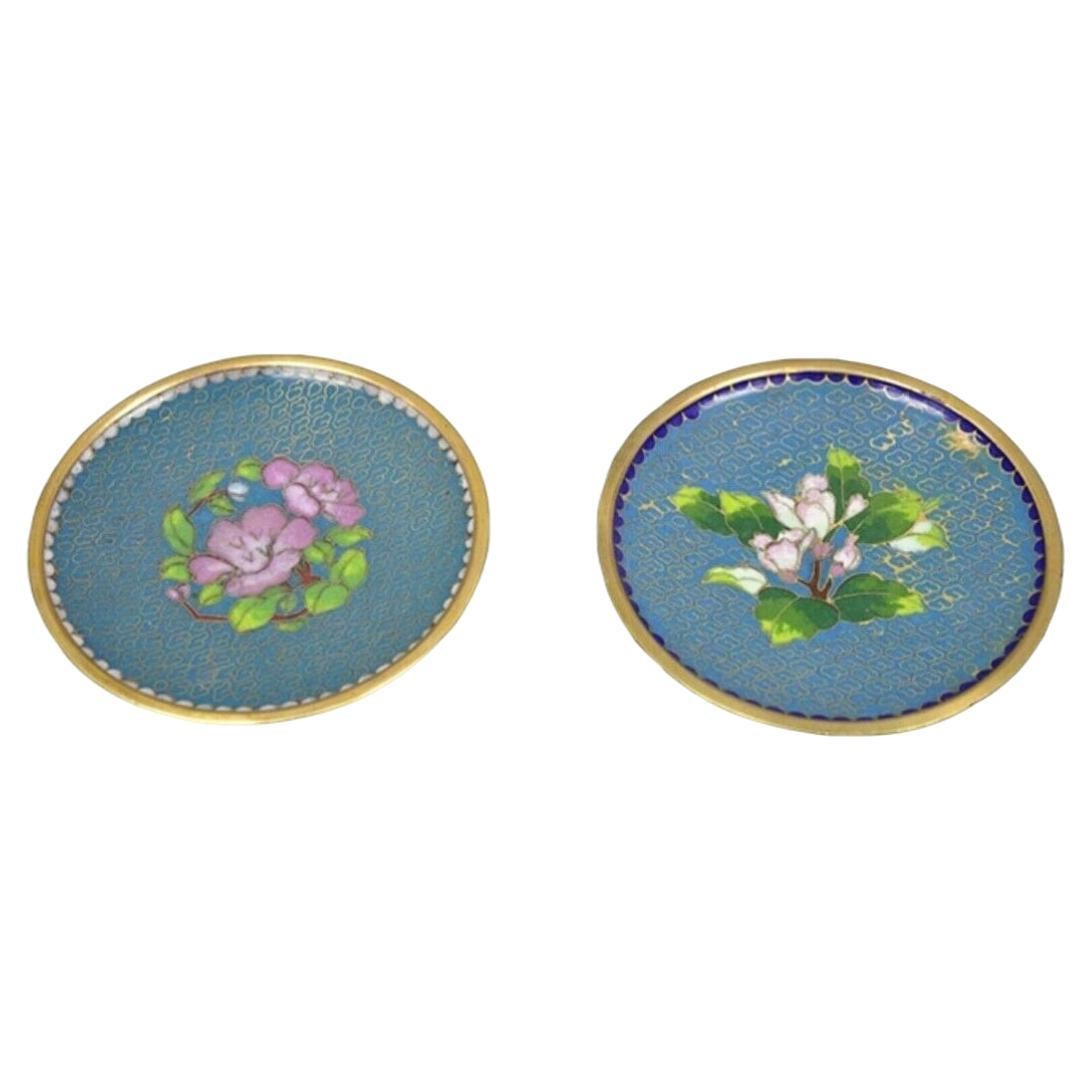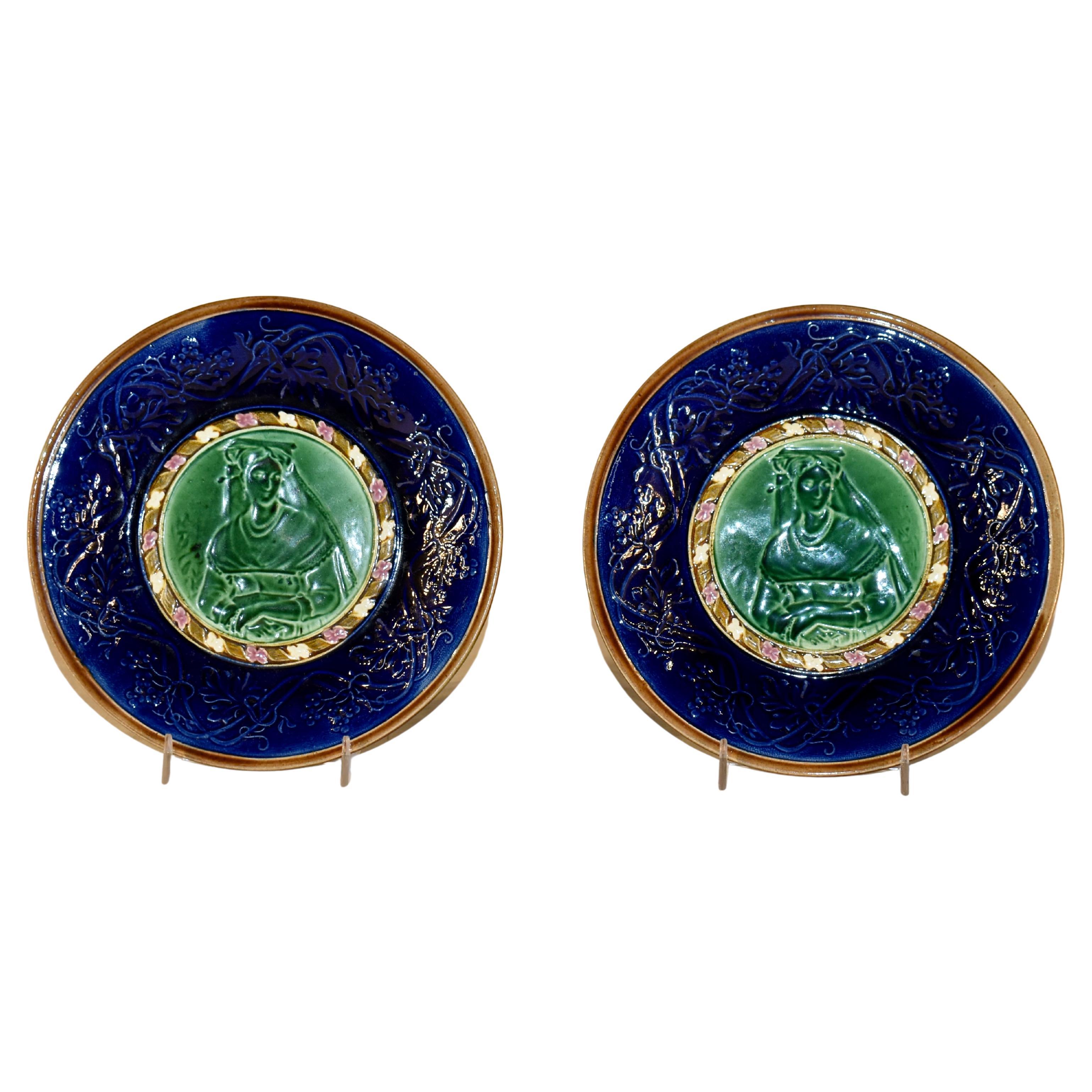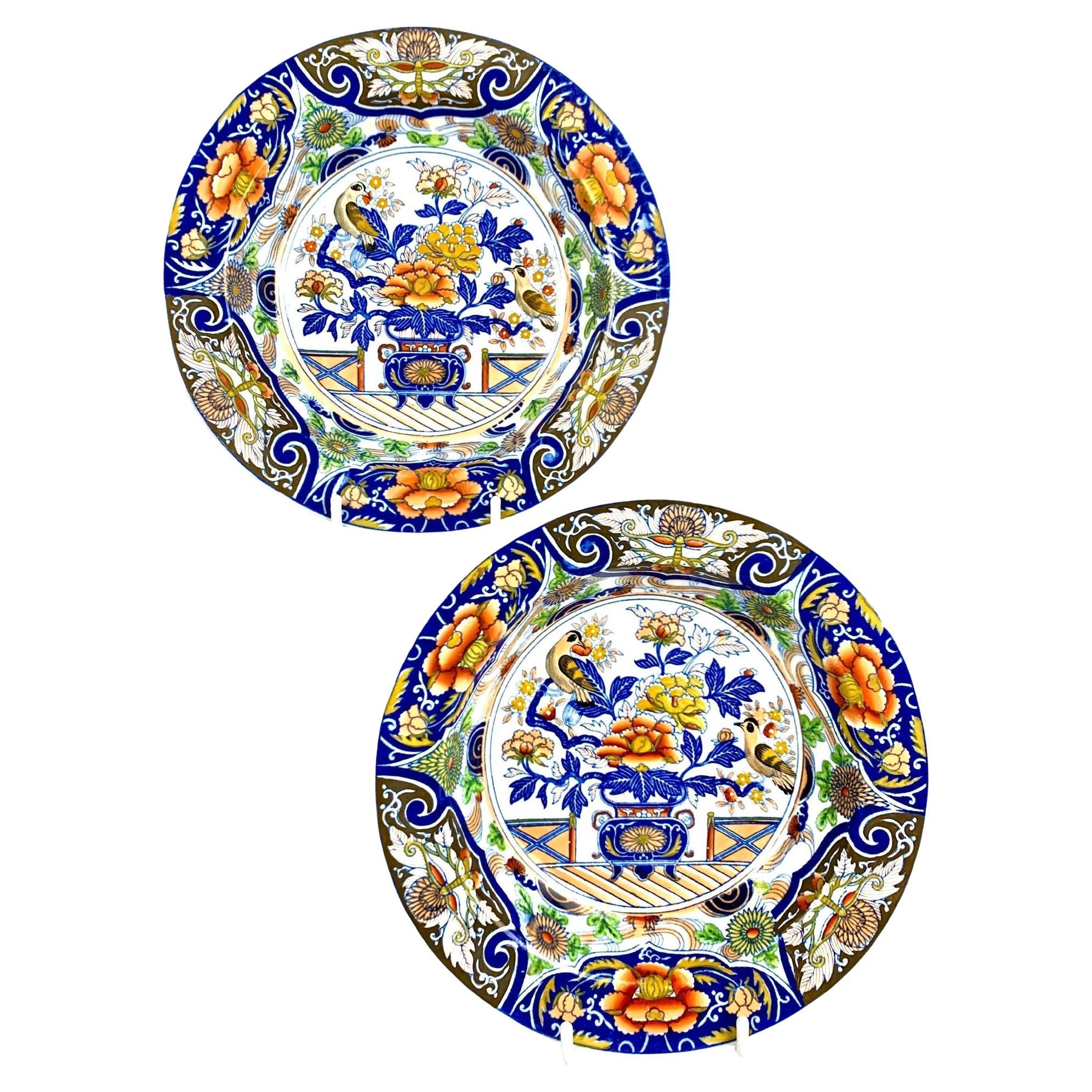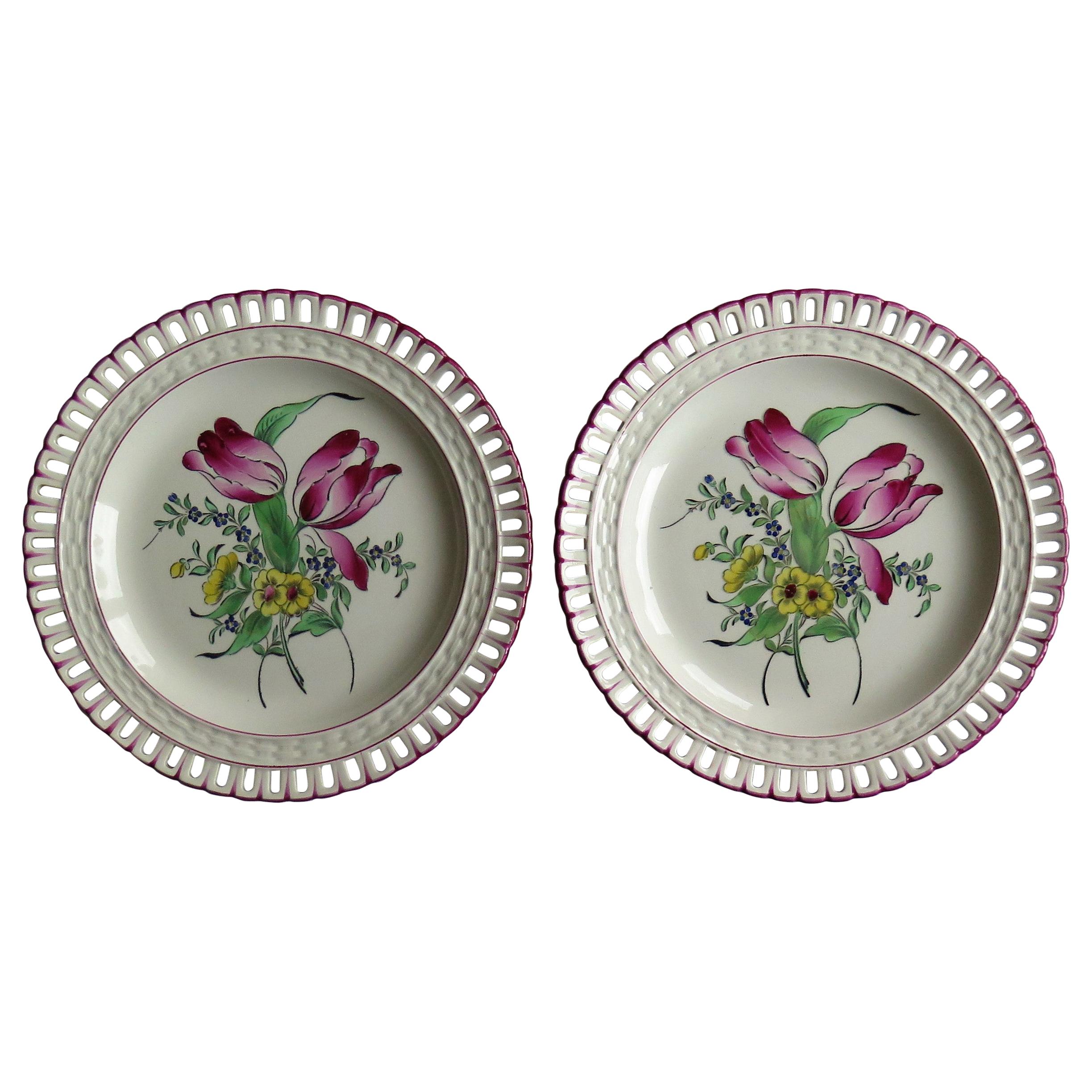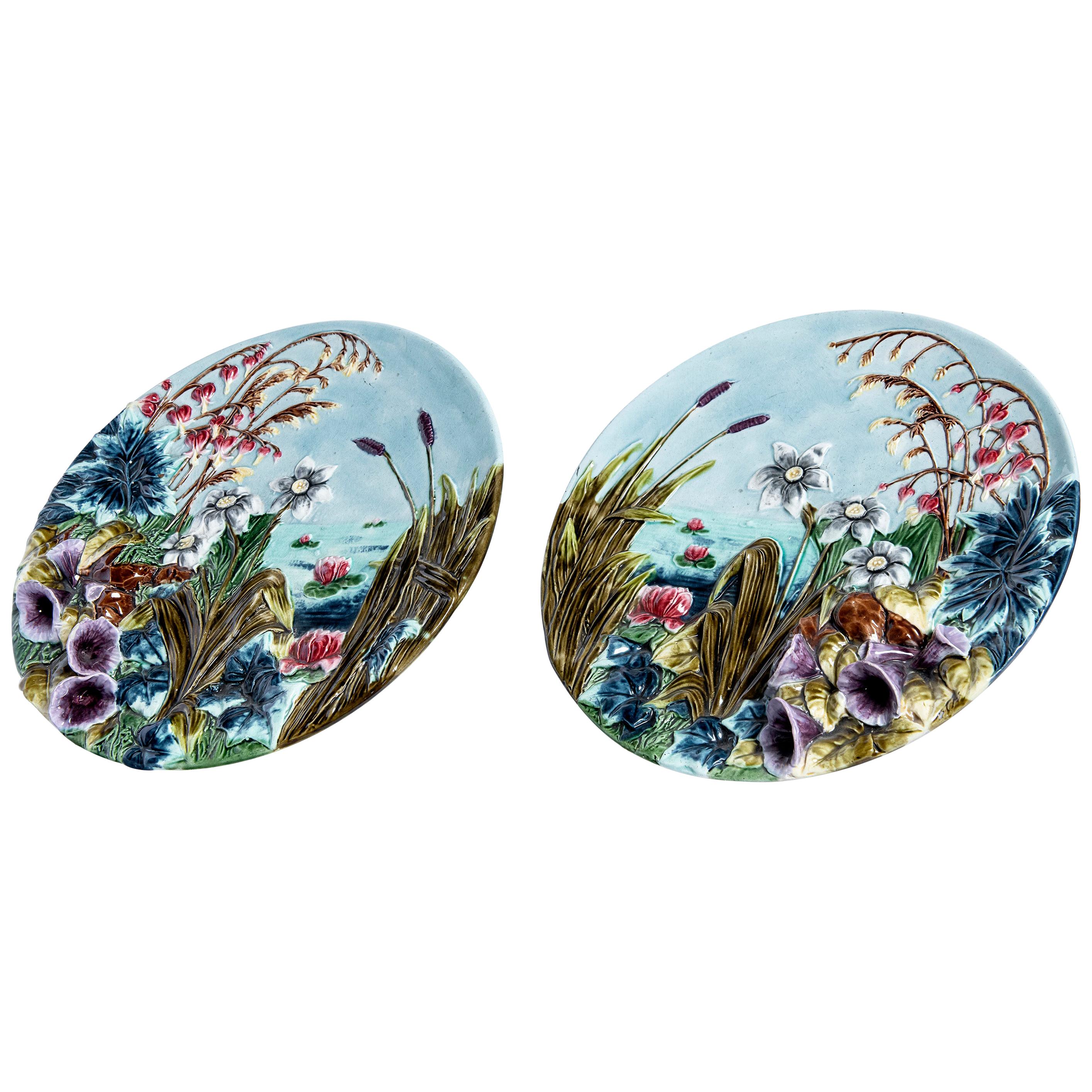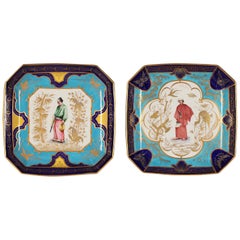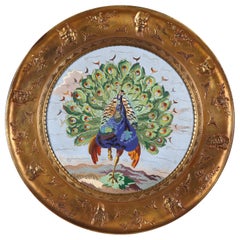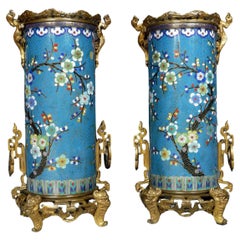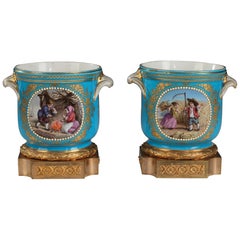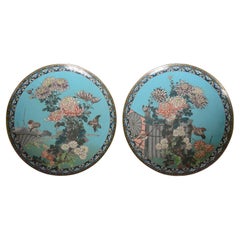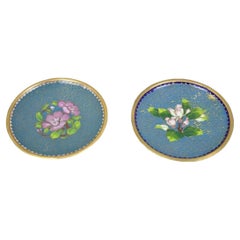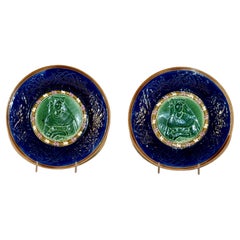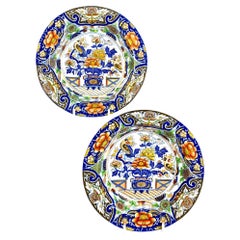Items Similar to Fine Pair of 'Cloisonne' Enamel Dishes Attributed to A. Giroux, France, c. 1880
Want more images or videos?
Request additional images or videos from the seller
1 of 6
Fine Pair of 'Cloisonne' Enamel Dishes Attributed to A. Giroux, France, c. 1880
$11,382.20per set
$14,227.74per set20% Off
£8,494.46per set
£10,618.08per set20% Off
€9,600per set
€12,000per set20% Off
CA$15,891.80per set
CA$19,864.75per set20% Off
A$17,332.76per set
A$21,665.95per set20% Off
CHF 9,112.86per set
CHF 11,391.07per set20% Off
MX$209,669.28per set
MX$262,086.59per set20% Off
NOK 113,717.10per set
NOK 142,146.37per set20% Off
SEK 107,451.85per set
SEK 134,314.81per set20% Off
DKK 73,104.63per set
DKK 91,380.79per set20% Off
About the Item
Beautiful pair of polychrome “cloisonné” enamel display dishes attributed to A. Giroux, decorated with birds flying over rushes and flowers on a sky blue background, bordered with a stylized foliate motif frieze. Finely mounted with gilded bronze ornaments such bamboos, masks and scrolls.
Alphonse Giroux and company, famous curiosity and luxury goods shop was situated at No. 7 rue du Coq-Saint-Honoré and in business from the time of the Consulate until the end of the Second Empire. The company was founded by Francois-Simon-Alphonse and continued in 1838 by his two sons, Alphonse-Gustave (1810-1886) and André (1801-1879).
The father became a close associate of the royal family and specialized in the manufacture of refined items for gifts, winning a silver medal at the in 1834. Kings Louis XVIII and then Charles X were both supplied with gifts for “The Children of France” by Giroux. Making progressively small furniture, they were mentionned for the first time in 1837 in the class “cabinet-makers” in the Paris Almanach. It was Alphonse-Gustave, however, who really expanded the activities of the firm as is testified by the report of the jury at the 1839 Products of Industry Exhibition awarding him another silver medal. Alphonse was also quick to participate in the famous and soon figured among the best in the luxury goods business. After buying a writing desk at the 1855 Universal Exhibition Napoleon IIIrd bought several other pieces of furniture, candelabras and clocks from Giroux for the Compiègne Palace. In 1857 Alphonse Giroux transferred his shop to No. 43, boulevard des Capucines where he continued to do business until 1867, when he ceded the company to Duvinage and Harinkouck.
- Attributed to:Alphonse Giroux et Cie (Designer)
- Dimensions:Height: 1.58 in (4 cm)Width: 17.13 in (43.5 cm)Depth: 15.36 in (39 cm)
- Sold As:Set of 2
- Materials and Techniques:
- Place of Origin:
- Period:
- Date of Manufacture:circa 1880
- Condition:Wear consistent with age and use.
- Seller Location:PARIS, FR
- Reference Number:Seller: 11441stDibs: LU3860313526662
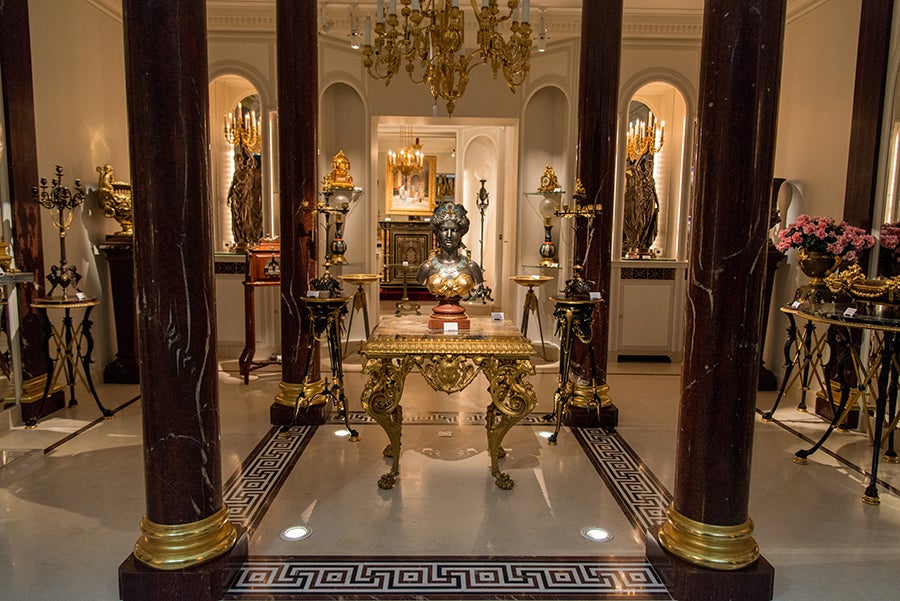
About the Seller
4.9
Gold Seller
Premium sellers maintaining a 4.3+ rating and 24-hour response times
Established in 1997
1stDibs seller since 2018
89 sales on 1stDibs
Typical response time: <1 hour
Associations
International Confederation of Art and Antique Dealers' Associations
- ShippingRetrieving quote...Shipping from: PARIS, France
- Return Policy
Authenticity Guarantee
In the unlikely event there’s an issue with an item’s authenticity, contact us within 1 year for a full refund. DetailsMoney-Back Guarantee
If your item is not as described, is damaged in transit, or does not arrive, contact us within 7 days for a full refund. Details24-Hour Cancellation
You have a 24-hour grace period in which to reconsider your purchase, with no questions asked.Vetted Professional Sellers
Our world-class sellers must adhere to strict standards for service and quality, maintaining the integrity of our listings.Price-Match Guarantee
If you find that a seller listed the same item for a lower price elsewhere, we’ll match it.Trusted Global Delivery
Our best-in-class carrier network provides specialized shipping options worldwide, including custom delivery.More From This Seller
View AllElegant Pair of Japanese Style Dishes, France, Circa 1875
Located in PARIS, FR
Pair of 18th century soft-paste porcelain dishes finely decorated in the 19th century with medallions representing Japanese theatre characters dressed in traditional costumes, beautiful gold-embossed ornament on a polychrome background.
These dishes are to be linked with the production of the Sèvres Manufacture.
The Manufacture de Sèvres, factory of soft-paste porcelain, was founded in 1738 at Vincennes by bankers and financiers hoping to discover the secret of making hard-paste porcelain, used in Meissen at the time. In 1753, King of France Louis XV became the main shareholder of the factory, transferring it to Sèvres, closer to Versailles and the castle of Bellevue, owned by la Marquise de Pompadour, very interested by Sèvres’ research and supportive of the works. In 1759, the King became the sole shareholder of the Manufacture, making it the property of the French Crown. From this day on, the Sèvres artworks were marked with the royal seal, two intertwined “L’s”, as well as a letter indicating the year of creation. The period between 1756 and 1779 represents the most prosperous years for the factory. To support Sèvres, Louis XV made sumptuous orders offered as diplomatic presents. The main artists at the time, such as painters Boucher and Bachelier or sculptors Falconet and Boizot, worked for the factory. Research on the making of hard-paste porcelain kept going and succeeded after 1769. From this year, Sèvres successfully produced both soft-paste and hard-paste porcelain. It is also during this period that the most beautiful and singular colors were invented: bleu lapis in 1752, bleu celeste in 1753, green in 1756, famous pink in 1757 and royal blue in 1763. The most significant pieces are ornamented with scenes inspired by engravings from famous painters (Boucher) and ornamentalists. They are also decorated with garlands, bunches of flowers, trophies, gildings… The fine quality of Sèvres’ production covers a large range of statuettes (Falconet’s threatening Love), full services (Rambouillet’s service is presented to Marie-Antoinette in 1788), as well as utilitarian or ornamental items. The role played by haberdashers in the production’s development is essential. They originated trends around Sèvres-designed products, such as Daguerre who decorated his most precious furniture with porcelain...
Category
Antique 1870s French Porcelain
Materials
Porcelain
$5,216 Sale Price / set
63% Off
Free Shipping
Aesthetic Movement Enameled Plate Attributed to Elkington and A. Willms, c. 1875
By Elkington & Co., W. Albert Willms
Located in PARIS, FR
Important tray made in gilded bronze and “cloisonné” enamel attributed to Elkington and Willms. Ornamented with a centering polychrome enameled peacock plaque, made of very high standard quality, mounted on a gilt-bronze dish, decorated in relief with Japanese Nô theater masks.
The great Birmingham firm of Elkingtons, was largely the creation of George Richards Elkington (1800-1865), who worked from 1824 in Birmingham as a manufacturer of silver-mounted scent bottles. By 1829 the business had expanded sufficiently for a branch to have been established in London. In the late 1830s the Elkingtons began making experiments to apply the principles of electro-metallurgy to gilding and plating with silver and in 1840 the patent was at last taken out. Elkingtons owed their rise to a position amongst the most important silversmiths of the country to their exploitation of this new process and the two of the most famous designers then employed, both of them French, Albert Wilms (1827-1899) and Morel-Ladeuil (1820-1888), who helped to make Elkingtons’ reputation with their elaborate exhibition pieces.
Albert Willms was apprenticed as modeler and engraver to Klagman, Dieterle and Constant in Paris before working for Morel & Co. in London in 1848. On his return to Paris he was employed by the great Parisian silversmiths including Christofle and Froment-Meurice, for whom he designed pieces to be presented at the 1855 Universal Exhibition in Paris. It was during this period that he joined the firm of Elkington in London as head decorator. Elkington was soon to become one of the first to produce refined pieces in “champlevé” enamel in the Chinese and Japanese styles, which were presented with great success at the London Universal Exhibition in 1862 (see Masterpieces of Industrial Art & Sculpture at the International Exhibition 1862, J.B. Waring, London, 1863, III, pl. 211). Willms’ “champlevé” enamels could not be compared, however, with the delicate “cloisonné” enamels exhibited by Japan at the Universal Exhibition in Paris in 1867. This explains why Elkington adapted the ancient Japanese technique to produce pieces according to European taste and custom. Followings the 1867 Exhibition all the major European artists rivaled in ingenuity for the 1873 Universal Exhibition in Vienna. In London Albert Willms presented his luxurious vases and cups in “cloisonné” enamel for Elkington (see Illustrations of Art Manufacturers in the Precious Metals exhibited by Elkington & Co., Inventors, Patentees and Manufactures of electroplate, 1873), whilst in Paris, Ferdinand Thesmar (1843-1912) produced in the workshops of Ferdinand Barbedienne (1810-1892) a tray decorated with a golden pheasant in “cloisonné” enamel on copper...
Category
Antique 1870s English Aesthetic Movement Decorative Dishes and Vide-Poche
Materials
Enamel, Bronze
$16,006
Free Shipping
Pair of "Cloisonne" Enamel Vases, Attr. to l'Escalier de Cristal, France, C.1870
By L'Escalier de Cristal
Located in PARIS, FR
Pair of Japanese-style roll-shaped vases, made in “cloisonné” enamel and gilded bronze. The cylindrical body is decorated with polychrom floral branches, flowers and butterflies on a...
Category
Antique 1870s French Japonisme Vases
Materials
Bronze, Enamel
Pair of Louis XVI "Sèvres" Porcelain Glass-Coolers, France, Circa 1880
By Manufacture Nationale de Sèvres
Located in PARIS, FR
Pair of porcelain glass-coolers with painted medallions and gilded ornaments on a turquoise blue background, mounted on a gilt bronze base, in the style of the Manufacture of Sèvres....
Category
Antique 1880s French Louis XVI Wine Coolers
Materials
Bronze
$5,643 Sale Price / set
30% Off
Pair of Cloisonné Vases Attributed to A. Giroux, France, Circa 1860
By Alphonse Giroux et Cie
Located in PARIS, FR
Pair of cloisonné enamel square vases attributed to A. Giroux, with flared neck decorated on the belly with flowering lambrequins with oriental patterns on a blue and golden geometric. The mount in patinated and gilded bronze is composed of an openwork frieze on the neck, side grips with Fô dog heads forming the handles, the whole resting on four feet in the shape of elephant heads.
Alphonse Giroux and Company, famous curiosity and luxury goods shop was situated in Paris, at No. 7 rue du Coq-Saint-Honoré and in business from the time of the Consulate until the end of the Second Empire. The company was founded by Francois-Simon-Alphonse and continued in 1838 by his two sons, Alphonse-Gustave (1810-1886) and André (1801-1879). The father became a close associate of the royal family and specialized in the manufacture of refined items for gifts. Kings Louis XVIII and then Charles X were both supplied with gifts for « The Children of France » by Giroux. Making progressively small furniture, they were mentionned for the first time in 1837 in the class « cabinet...
Category
Antique 1860s French Vases
Materials
Enamel, Bronze
Planter and Decorative Dish Attributed to Samson & Cie, France, Circa 1880
By Samson & Cie
Located in PARIS, FR
Important porcelain planter and decorative dish attributed to Samson & Cie.
They are decorated with golden and red friezes of intertwined lotus, fruits and flower cups, fans and two...
Category
Antique 1880s French Planters, Cachepots and Jardinières
Materials
Porcelain
You May Also Like
Pair Japanese 19th Century Cloisonne chargers.
Located in Brighton, Sussex
This exquisite pair of Japanese Meiji period cloisonné enamel chargers showcases the intricate artistry typical of the era. Each charger features a vibrant turquoise background, ador...
Category
Antique Late 19th Century Japanese Decorative Art
Materials
Enamel
Vintage Brass Enamel Cloisonne Small Trinket Dish Set - Blue
Located in Philadelphia, PA
Vintage Brass Enamel Cloisonne Small Trinket Dish Set - Blue. Listing includes both dishes. Circa Late 20th Century.
Measurements: 0.25" H x 4" Diameter.
Category
Late 20th Century Chinoiserie Tableware
Materials
Brass
Pair of 19th Century J. Roth Majolica Plates from London
Located in High Point, NC
Pair of late 19th century Majolica plates signed J Roth, who was located in London from 1879-1881. J Roth was a small manufacturer that only did the finest in Majolica pieces. The ...
Category
Antique 19th Century English High Victorian Ceramics
Materials
Ceramic
Pair of Antique English Dishes Handpainted with Chinoiserie Decoration Ca. 1815
Located in Katonah, NY
This pair of pearlware dishes is decorated with a gorgeous chinoiserie pattern.
The pattern depicts a lively garden scene with a pair of songbirds among flowers on a garden terrace.
...
Category
Antique Early 19th Century English Decorative Dishes and Vide-Poche
Materials
Pearlware
PAIR of Faience Plates by K&G Luneville Hand Painted Flowers, French circa 1895
By Luneville
Located in Lincoln, Lincolnshire
These are a beautiful pair of French Faience dinner plates with pierced rims, made by the Luneville K&G factory and dating to the late 19th century, circa 1895.
These large circular earthenware pottery plates are well potted with pierced reticulated rims.
Both plates are hand painted over a printed outline, with a similar bold floral pattern in different shades of Pink, blue, green and yellow enamels.
Both plates have the the black printed Luneville, K&G factory mark on the base, dating them to the late 19th century, circa 1895.
Overall a very decorative matching pair of French Faience plates.
Category
Antique Late 19th Century French Country Ceramics
Materials
Earthenware
Pair of Barbotine Ceramic Dishes, Art Nouveau Period, France, circa 1890
By Barbotine
Located in Buenos Aires, Buenos Aires
Pair of Barbotine ceramic dishes, Art Nouveau Period, France, circa 1890.
Category
Antique 1890s French Art Nouveau Ceramics
Materials
Ceramic
More Ways To Browse
Antique Dishes
Hall Antique Dishes
Silver Medals
Used Luxury Goods
Louis Xviii
Antique Enamel Bowls
French Cloisonne
Antique Silver Gift
Curiosity Shop
Cloisonne Bronze French
Bamboo Scrolls
Alphonse Giroux
Cloisonne Dishes
Antique Vide-Poche
Hall Antique Dishes
Antique Porcelain Basket
Antique Porcelain Pottery
Antique Flower Basket
